With sufficient wherewithal, you can build a personal recording studio today that can rival the sound palaces of yore, like The Hit Factory and the legendary Caribou Ranch.
Back in music’s Pleistocene Era—circa the 1970s and ‘80s and earlier—labels would spend a pretty penny to rent studio time for musicians. Ever since the dawn of the project studio, artists have been saving up to buy the studio, or at least the increasingly affordable and powerful elements of it that have let them become masters of their own domain.
Some personal studios are downright palatial, with fit and finish worthy of a boutique hotel. But what artists are really after is a place where they can feel comfortable, where they can take artistic chances without looking at clock ticking away label dollars.
Half–million–dollar battleship mix consoles and multitrack tape decks worth many thousands of dollars have been largely supplanted by software that costs less than a night at a really nice hotel, leaving artists capital for making it that personal studio look and feel good.
Here, a few leading music-makers reflect on what makes their own personal recording studio the refuge and resort of their dreams.
The Church
Paul Epworth didn’t build a studio in a church to hold all of his awards, though it might take that kind of space to contain all of his many Grammys, Brits, Oscars and other gilded statuary for work with artists like Adele, Coldplay, U2, Paul McCartney, Bruno Mars, Florence and the Machine, and Rihanna.
Since 2013, he has mainly worked out of The Church, a mid–19th century house of worship that was first renovated as a studio by Dave Stewart of Eurythmics. Epworth commissioned the studio design guru behind Electric Lady Studios, John Storyk, to take The Church to the next level.
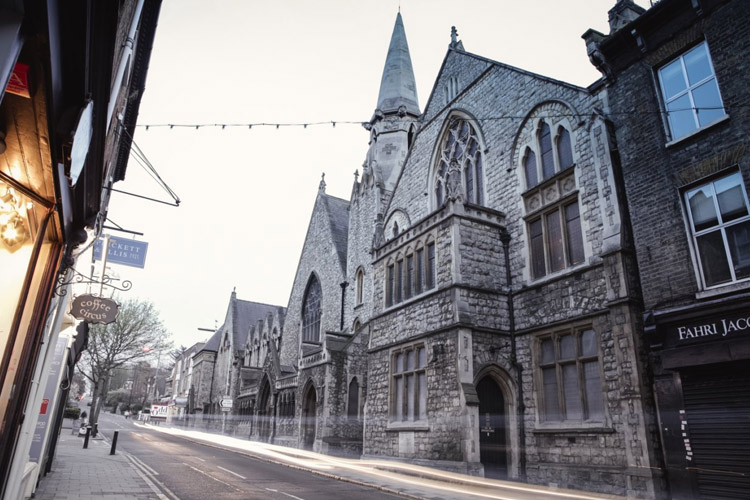
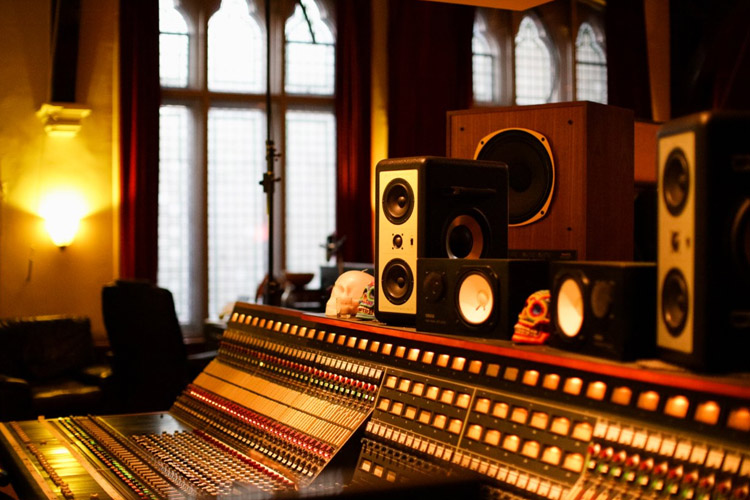
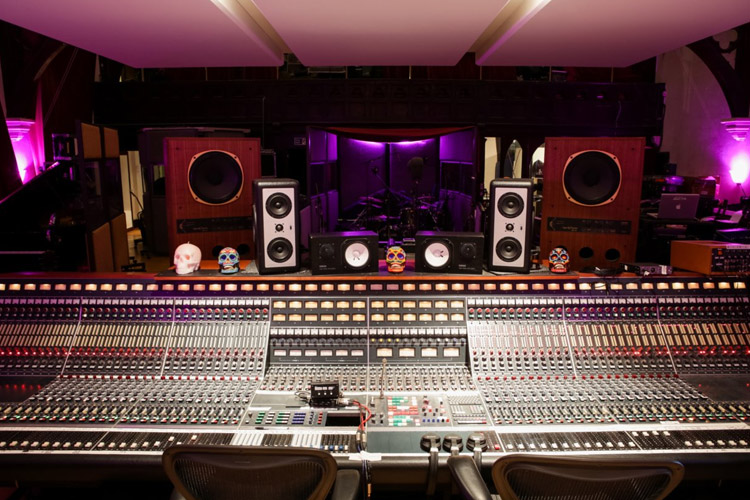
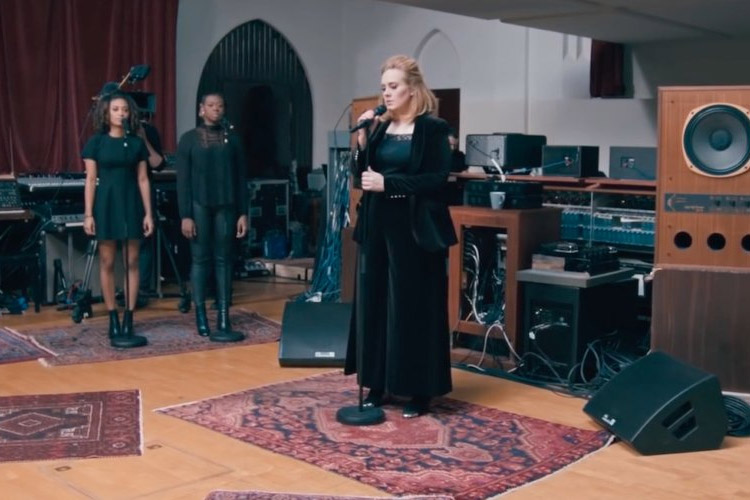
When remodeling The Church, Epworth wanted to develop the same closeness and comfort that he felt when writing and partially recording Adele’s “Rolling in the Deep” in a room not much bigger than two sofas put together. The Church, Epworth believes, can be a cathedral of massive sound and a confessional of intimate emotion.
“The main thing was there was no separation of artist and producer and that means it was much easier to accomplish. That was what we tried to recreate on a larger scale with The Church.”
The Church contains three studios, and they each house serious firepower. For instance, Studio 1 has a discrete Neve mixer built for EMI in the 1970s. Studio 2 has a Solid State Logic 4056G console.
It makes sense that churches are recording studios, still bringing some magic to people’s lives." - Paul Epworth
Meanwhile, its spacious main hall inspires musicians anew, such as The Edge’s guitar parts on “The Ballad Of Joey Ramone" on U2’s last LP. To Epworth, The Church is more than a space. “I feel there is a definite spiritual element to music,” he says.
“The random occurrences that happen so frequently—the moments that make your hair stand on end—can’t be chance. It makes sense that churches are recording studios, still bringing some magic to people’s lives.”
The Grip
If you’ve seen the video for Rascal Flatts’ “I Like The Sound Of That,” the fourth No. 1 single from the Nashville band’s 2014 album Rewind, you’ve seen Jay DeMarcus’ home studio.
That song, and much of rest of the 2010 ACA Decade Artist award–winners’ discography has been produced in the studio since DeMarcus, the band’s bass player and co-producer, installed it in his home in 2008. Studio designer Carl Tatz describes it as his “most ambitious personal studio design to date.”
With its stacked–stone wall treatments and other elegant finishes, The Grip is gorgeous and quirky. One of its two isolation booths, nicknamed “the Phone Booth,” has an actual pay phone inside, and door pulls are made from Vox wah pedals and Fender Jazz Bass necks. But this studio is no toy.
DeMarcus can pilot the studio’s Solid State Logic AWS 900+ SE console himself but prefers to work with an engineer, often his studio domo Nick Lane, so he can focus on the music instead of the technology.
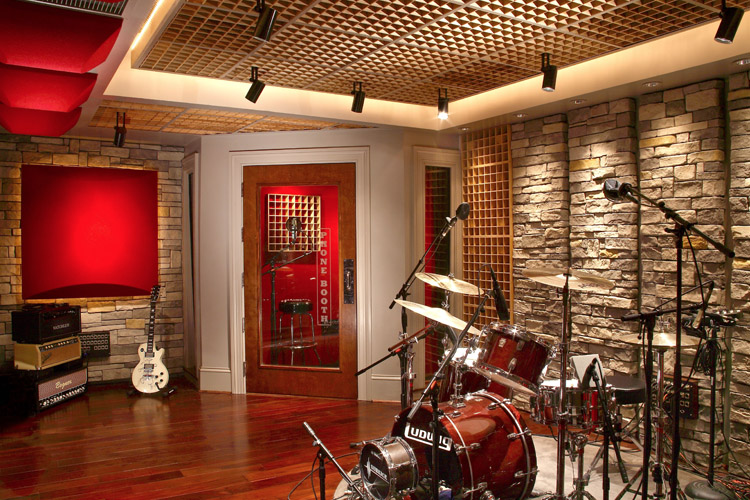
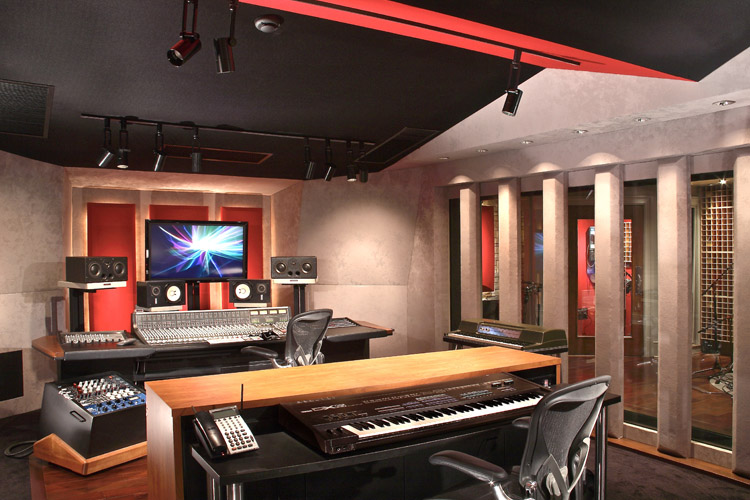

It’s also become a creative redoubt for a circle of friends and collaborators who use the studio. DeMarcus says that helps offset the studio’s costs, but also provides opportunities to record demos with freedom and find new hit songs, a relentless pursuit in Nashville. “They might even have me play bass on the demos.”
The only problem with having this much state–of–the–art so accessible is that it’s easy to get lost in it. “My wife has to come and remind me I have a life outside of the studio,” he says.
The Barn
The multi–instrumentalist and producer Michael Marquart has done everything from drum with Flock of Seagulls to mix records for No Doubt.
A peripatetic career has left him with not one but two personal studios. The first is a sparsely outfitted one in his native Virginia Beach, a town called home by hip hop artists Missy Elliott and the Neptunes, who actually purchased Marquart’s first studio there.
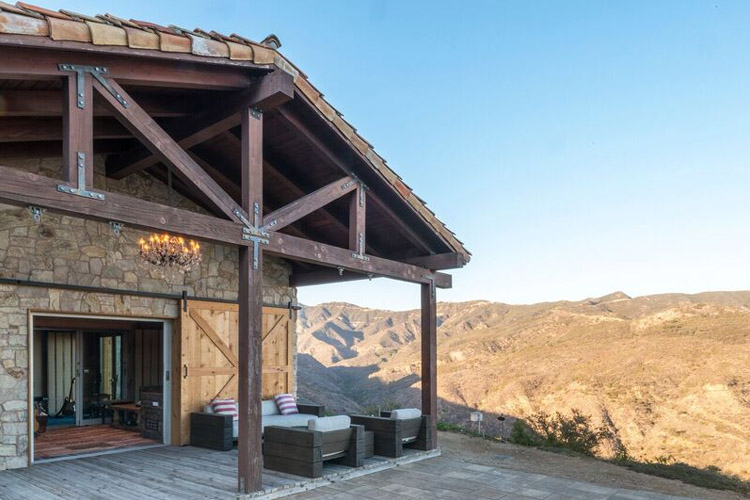
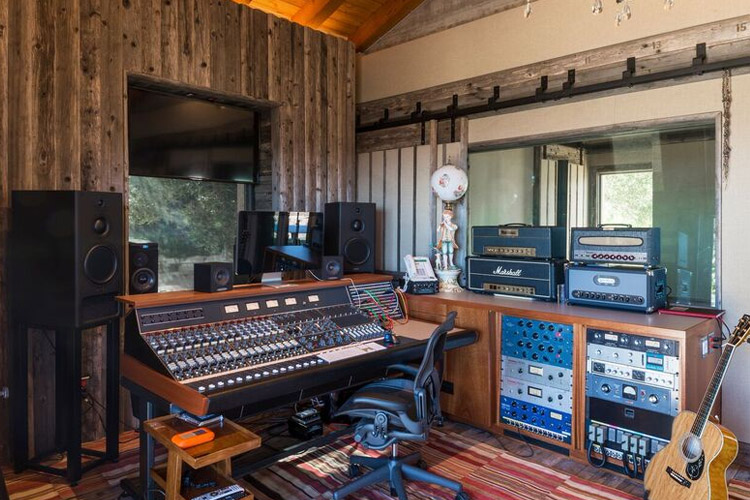
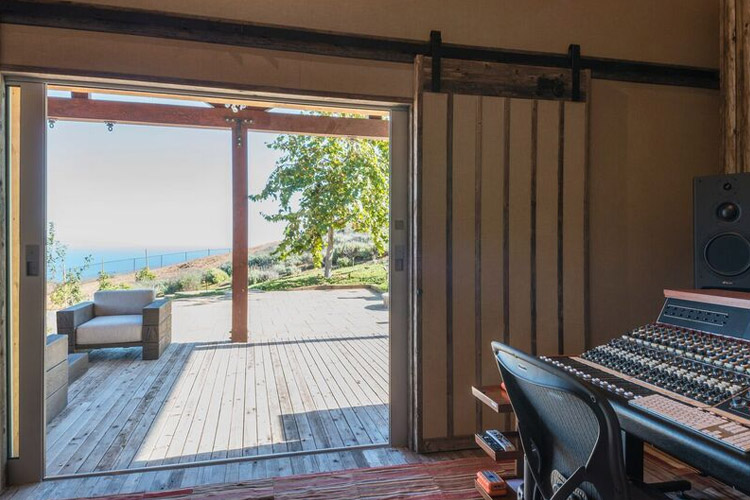
The second is The Barn, a more substantial studio on the other side of the country in Malibu, and it’s flush with vintage accoutrements.
In The Barn, you’ve got all that wood that’s been soaking up music from the Hollywood Bowl.” - Michael Marquart
That studio houses a Neve 8014 console from 1974. The studio’s wood flooring and paneling was rescued by studio designer Peter Grueneisen of nonzero/architecture from the seating benches in the old Hollywood Bowl after the venue originally constructed in the 1920s was renovated in 2003.
Marquart says the two locations serve different but complementary purposes. “Virginia Beach is really a songwriting haven, a great place to put your thoughts together,” he says.
“In LA, I’ve got all the musicians and engineers to call on. And in The Barn, you’ve got all that wood that’s been soaking up music from the Hollywood Bowl.” Now that’s inspirational.
Think Loud
Keystone State grungers Live are best remembered for 1994’s Throwing Copper, which sold eight million copies in the US, and over 20 million worldwide.
Upon reforming, the band renovated a 53,000–square–foot, turn–of–the–century former factory building in their hometown of York, Pennsylvania in 2013. They added apartments and offices for themselves, and a bar/lounge/man cave with memorabilia from the band’s 30-year history.
And of course, there’s a recording studio and a community kitchen that rival each other in technology and aesthetics.
The band worked with studio designer Horacio Malvicino, a native of Lyon, France who considers himself “a pretty decent chef.” Malvicino says both the studio and the kitchen were near the top of the band’s hierarchy of needs, where a six–burner Viking stove is on a par with the control room’s Solid State Logic Duality console.

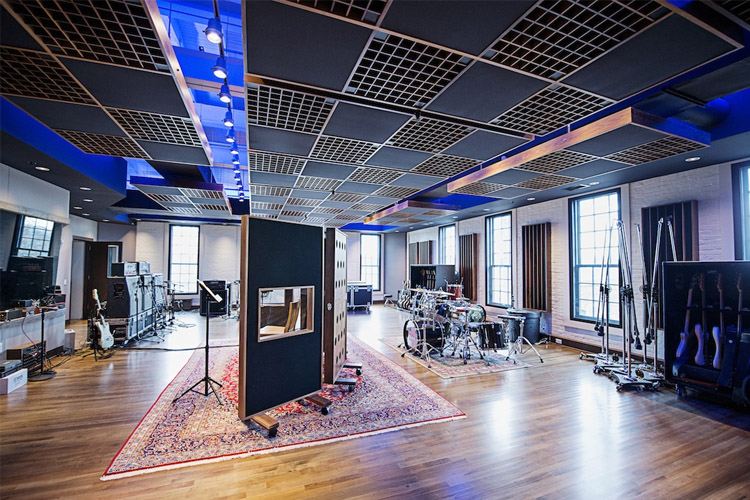
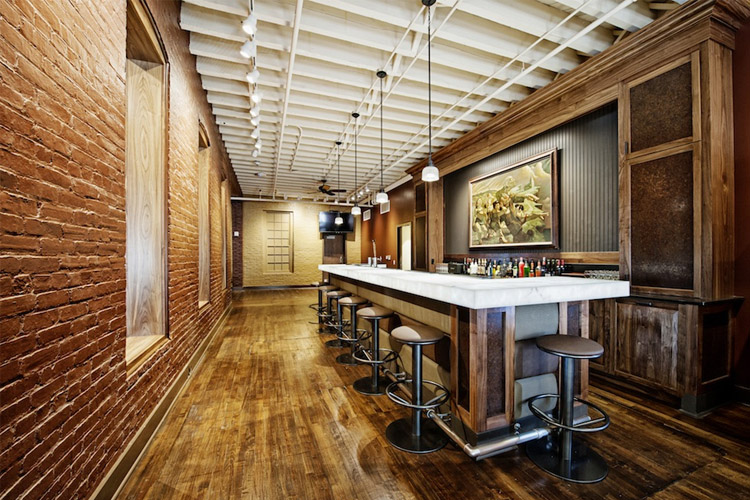
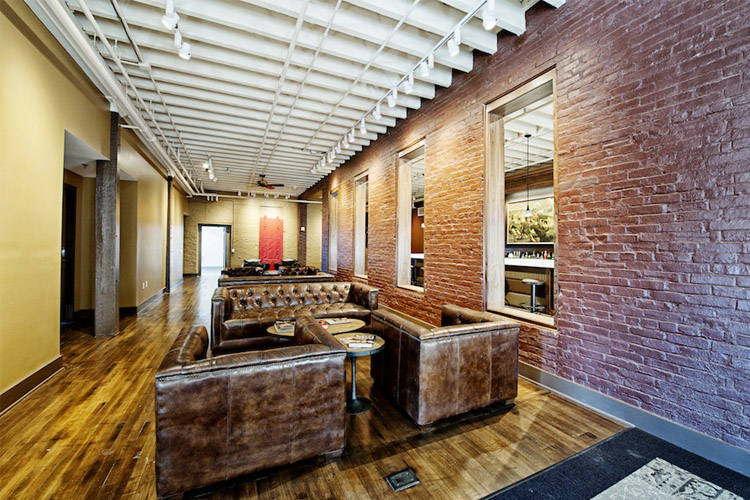
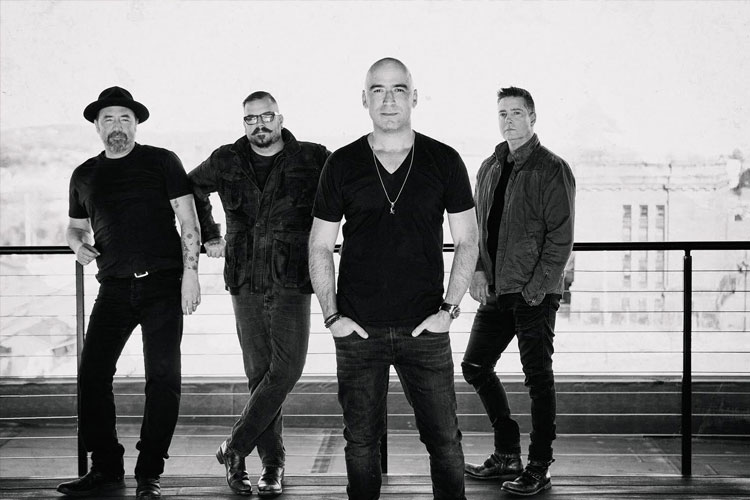
The fourth–floor studio’s been used by a number of friends. Everclear and Candlebox both made parts of their last records there, as did Live. Amp–switching genius Bob Bradshaw has also set up temporary quarters there.
The band has come to see Think Loud as an investment in both real estate and each other. Founding singer Ed Kowalczyk, who rejoined the band late last year, implies that the studio is therapeutic as well as practical. “It’s like our kid,” he only half jokes. “It brings us together. We have to support it and keep it healthy.”
Large-Format Analog Studio Gear